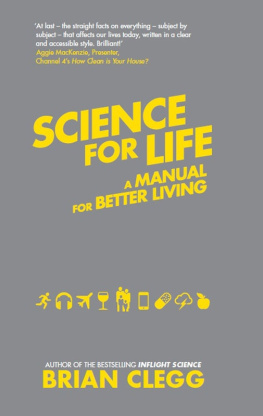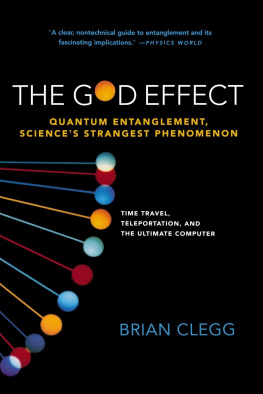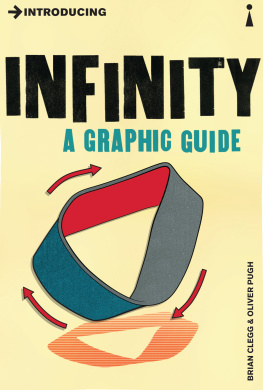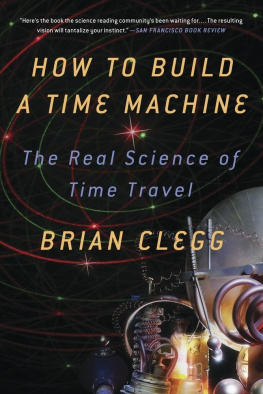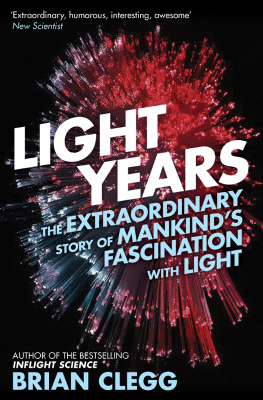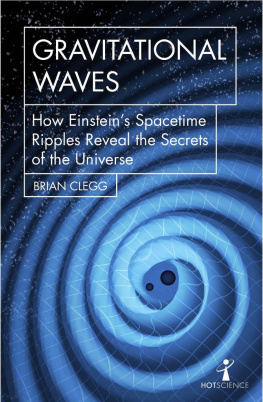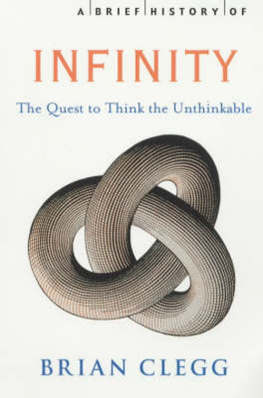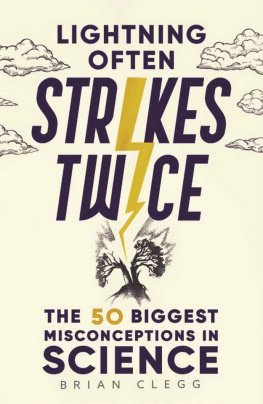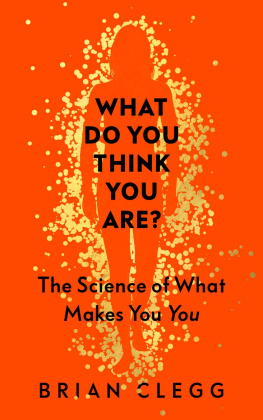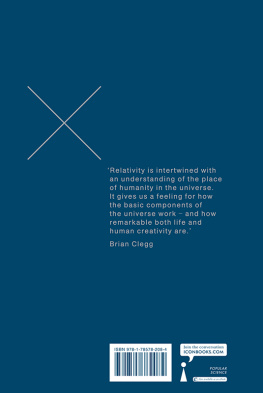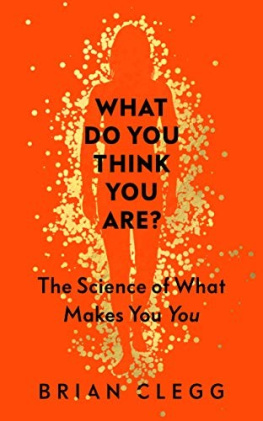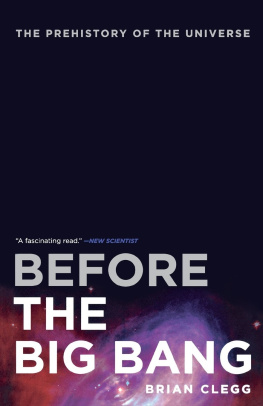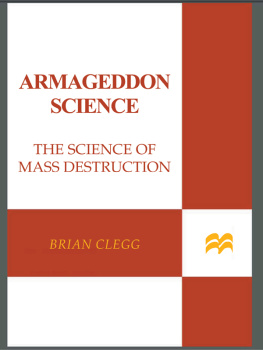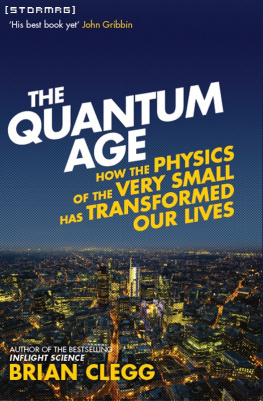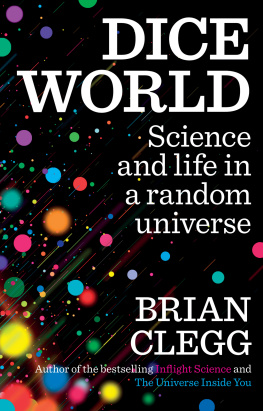SCIENCE
FOR LIFE
Also by Brian Clegg
Dice World
Inflight Science
Introducing Infinity: A Graphic Guide
Light Years
The Quantum Age
The Universe Inside You
SCIENCE
FOR LIFE
A MANUAL
FOR BETTER LIVING
BRIAN CLEGG

Published in the UK in 2015 by
Icon Books Ltd, Omnibus Business Centre,
3941 North Road, London N7 9DP
email: info@iconbooks.com
www.iconbooks.com
Sold in the UK, Europe and Asia
by Faber & Faber Ltd, Bloomsbury House,
7477 Great Russell Street,
London WC1B 3DA or their agents
Distributed in the UK, Europe and Asia
by TBS Ltd, TBS Distribution Centre, Colchester Road,
Frating Green, Colchester CO7 7DW
Distributed in the USA by
Consortium Book Sales & Distribution
34 13th Avenue NE, Suite 101
Minneapolis, MN 55413
Distributed in Australia and New Zealand
by Allen & Unwin Pty Ltd,
PO Box 8500, 83 Alexander Street,
Crows Nest, NSW 2065
Distributed in South Africa by
Jonathan Ball, Office B4, The District,
41 Sir Lowry Road, Woodstock 7925
Distributed in Canada by Publishers Group Canada,
76 Stafford Street, Unit 300
Toronto, Ontario M6J 2S1
ISBN: 978-184831-818-2
Text copyright 2015 Brian Clegg
The author has asserted his moral rights.
No part of this book may be reproduced in any form, or by any means, without prior permission in writing from the publisher.
Typeset in Minion by Marie Doherty
Printed and bound in the UK
by Clays Ltd, St Ives plc
ABOUT THE AUTHOR
Science writer Brian Clegg studied physics at Cambridge University and specialises in making the strangest aspects of the universe from infinity to time travel and quantum theory accessible to the general reader. He is editor of www.popularscience.co.uk and a Fellow of the Royal Society of Arts. His previous books include Inflight Science, Build Your Own Time Machine, The Universe Inside You, Dice World, The Quantum Age and Introducing Infinity: A Graphic Guide.
www.brianclegg.net
INTRODUCTION
Science plays a fundamental role in everyday lives improving health, increasing life expectancy, enhancing life experience. Yet it can be difficult to get a practical picture of what is really best for us whats needed is a science recipe book for you and your family. Science for Life is exactly that it presents the best of current scientific advice, cutting through the vested interests and confusing, contradictory statements to give a clear picture of what science is telling us right now about changing our lives for the better.
Part of the problem we face is that we are bombarded in the press by claims that a new substance helps us lose weight or reduces the risk of cancer only to find a few weeks later that the same newspaper or magazine says that the same substance is bad for us. This isnt scientists being confused, but rather the media misusing information.
The news media are desperate to grab our attention. So even when they are entirely aware that a claim for, say, a new product is worthless, they will typically plaster the headlines with the claim as if it were true and only later reveal that it has no merit. The trouble is that, by then, many of us will have given up reading.
A great example emerged while this book was being written the drinkable sunscreen story (see for your lotion to sink in to avoid a sandy situation could be numbered, as a US skincare company claim to have created a drinkable suncream.
After giving us details of the product and the company making it, the article does bring in experts to say that the product doesnt make sense but by then it is too late. Admittedly the Telegraphs headline warns that experts say it is a gimmick, but we get no such suggestion from the Daily Mail, where a travel reporter (not a science reporter) gives us the headline: Worlds first drinkable sun cream goes on sale and just a teaspoon will offer three hours protection. Well, no, it wont but Mail readers may well be convinced it will.
Beyond this kind of marketing news, when the results of a scientific trial are published, the newspapers are even more likely to blare out the trials findings as fact. But there are two problems with this. One is that not all trials are equal. To be useful, a trial has to be properly managed with a large enough number of participants to iron out any statistical oddities, using sensible techniques and ensuring that neither the participants in the trial nor the testers know who is getting the substance being tried out, and who has a harmless substance with no effect (a placebo) to make a comparison. Such trials are called double blind and unless this is done, it has been shown time and again that the expectations of both participants and testers will influence the results.
By comparison, a lot of the trials and studies reported in the press have very small numbers of participants (say ten to twenty), are often based on participants descriptions of how they feel, and are not properly controlled for error. They may also be run by individuals with a vested interest in the outcome.
Another problem is that one trial is hardly ever enough. Even the best of scientists can make errors, and one of the checks and balances of science is that before a theory or treatment is considered worthwhile, the results have to be duplicated by other scientists and laboratories. All the best results are supported by a number of trials, and the best medical and dietary results typically come from a study that pulls together the results of many trials and combines them, giving more weighting to the best studies. Such meta analyses, like those provided by the Cochrane Collaboration, an organisation that specialises in collecting the best evidence on medical issues, are the gold standards in medicine.
Partly as a result of taking time to undertake a wide range of trials, it is also the case that scientists do sometimes change their minds, as they have, for instance, about the health risks from cholesterol in eggs or the chances of saturated fat in your diet giving you heart disease. This is because real science isnt the same as the cartoon caricature version most of us have in our minds.
We tend to think of science as a search for the truth that will result in discovering the fundamental laws of nature and absolute results. In reality it is hardly ever like that. Its just about possible for science to come up with a solid result in a straightforward piece of physics, like Newtons laws of motion though even those have had to be modified to deal with Einsteins special relativity. But its quite different when dealing with a complex system like the human body, and how different aspects of life influence it.
One problem is separating out a particular cause. It can be quite difficult, for instance, to say whether people who are obese are more prone to heart attacks because of their diets, because of their lack of exercise or because of the changes to their bodies brought about by obesity.
So what science usually provides us with is the best current agreed position, given the data we have at the moment. That position may, and sometimes will, change when we have better data as it did over saturated fat. But there is no sensible reason for going with anything other than the best current agreed position until we have further information.
Unfortunately the media often ignore this, which is why, for instance, they made such a huge mistake in publicising Andrew Wakefields notoriously bad results linking the MMR vaccination to autism in the UK. Wakefield was a single voice, not particularly well-qualified for the task, and based his assertion on a tiny amount of data from a very small, badly selected group of children. Ranked against him was practically every medical expert, with vast numbers of trials showing the opposite conclusion and yet the media ran with the Wakefield scare story, many parents stopped their children having MMR and the result was large-scale measles outbreaks, causing serious illness and deaths.
Next page
